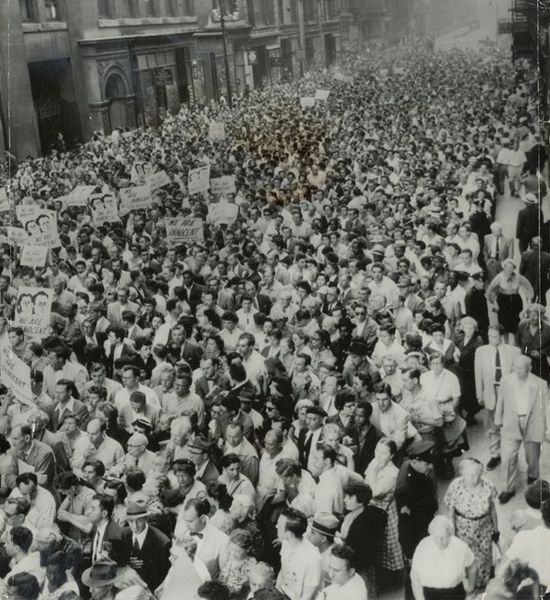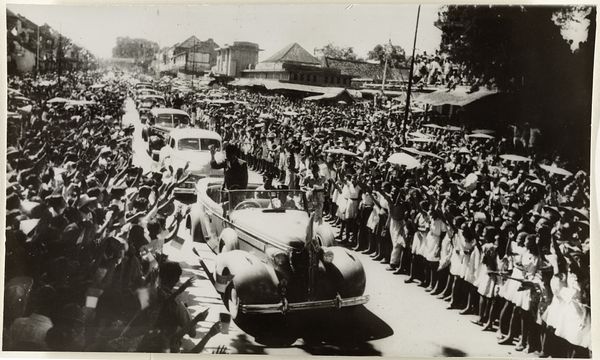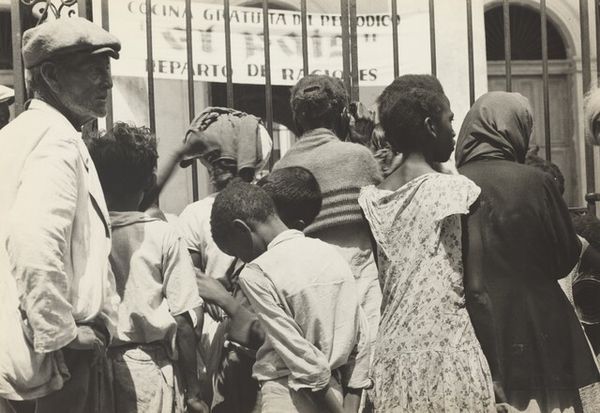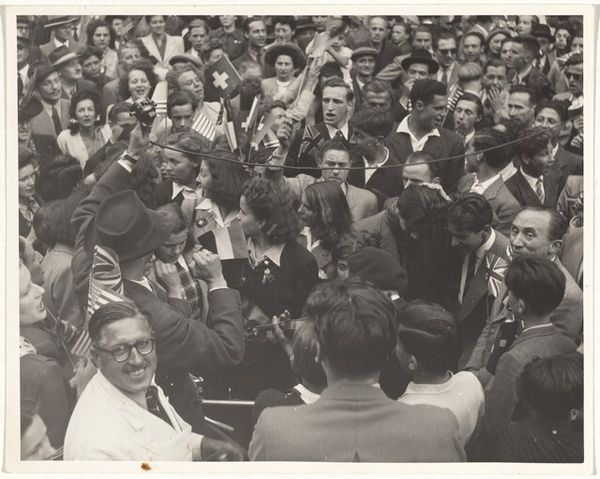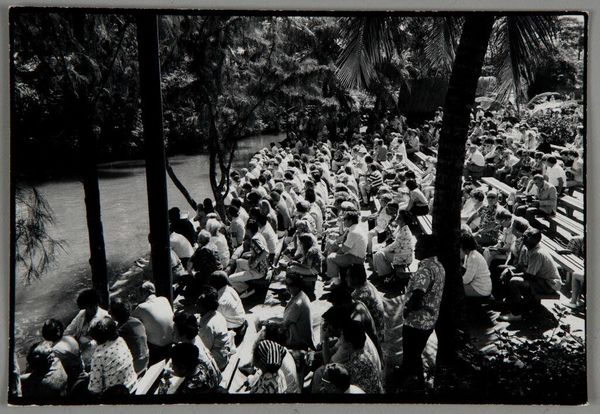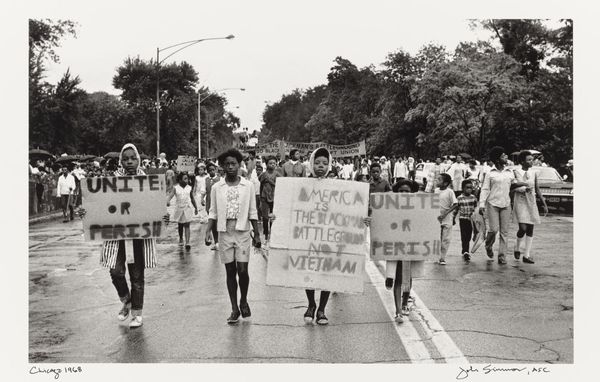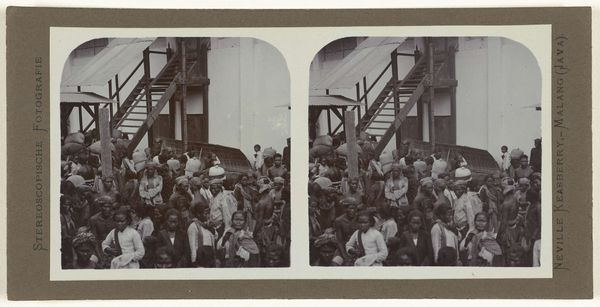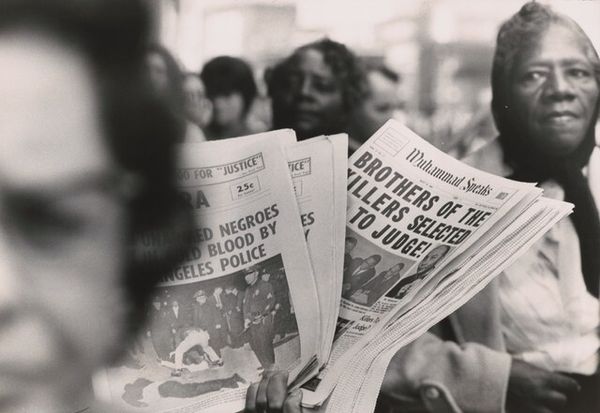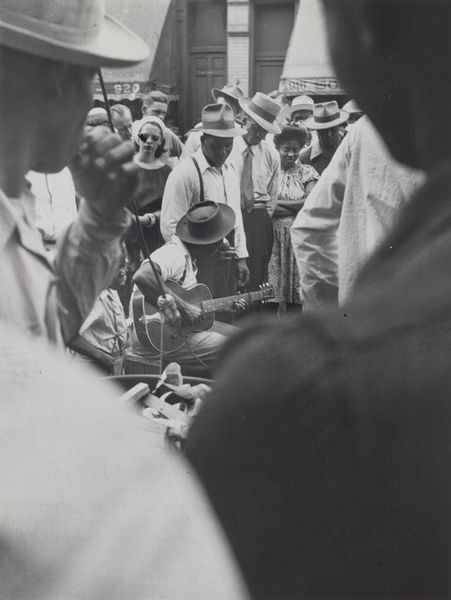
Civil Rights Demonstration for Fair Employment and Housing Legislation, Washington, D.C. 14 - 1963
0:00
0:00
photography, gelatin-silver-print
#
african-art
#
contemporary
#
narrative-art
#
social-realism
#
photography
#
group-portraits
#
gelatin-silver-print
#
monochrome
#
modernism
#
monochrome
Dimensions: image: 27.25 × 35.8 cm (10 3/4 × 14 1/8 in.) sheet: 28.89 × 36.2 cm (11 3/8 × 14 1/4 in.)
Copyright: National Gallery of Art: CC0 1.0
Editor: This gelatin silver print by Arthur Ellis, taken in 1963, documents a Civil Rights demonstration in Washington D.C. It's an incredible image, conveying the energy of the crowd despite being still and monochrome. What symbolic meanings are embedded within this photograph, especially considering the period in which it was taken? Curator: Absolutely. Consider the visual language being employed. Beyond the literal depiction, photographs of this nature served as vital symbolic tools during the Civil Rights Movement. Note the sheer number of people – the multitude as a symbol of collective power and unified purpose. The signs themselves, barely legible in the photograph, become icons representing specific demands: fair employment, housing. Do you see how these seemingly simple requests transcend their immediate context? Editor: Yes, I see how they become representations of the fundamental human rights everyone deserves. Curator: Exactly. The monochrome emphasizes the gravity and timelessness of the struggle, rooting it in a deeper cultural memory. Notice, too, how Ellis frames the subjects, not as isolated individuals, but as components of a larger, interconnected whole. This emphasizes their solidarity, conveying a sense of determination through collective imagery. This is the iconography of resistance. What stands out most to you? Editor: I am intrigued how the very act of documenting such gathering serves as an act of cultural memory making. I now view it beyond the representation of a historical event, it echoes the enduring struggle for equality. Curator: Precisely. Images such as these are important, to remind, to reinforce and reinvigorate for generations to come. It becomes iconography for change.
Comments
No comments
Be the first to comment and join the conversation on the ultimate creative platform.
